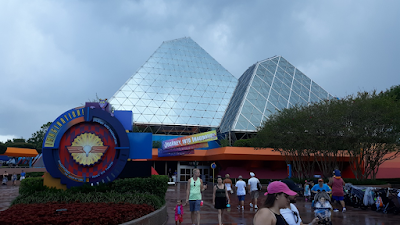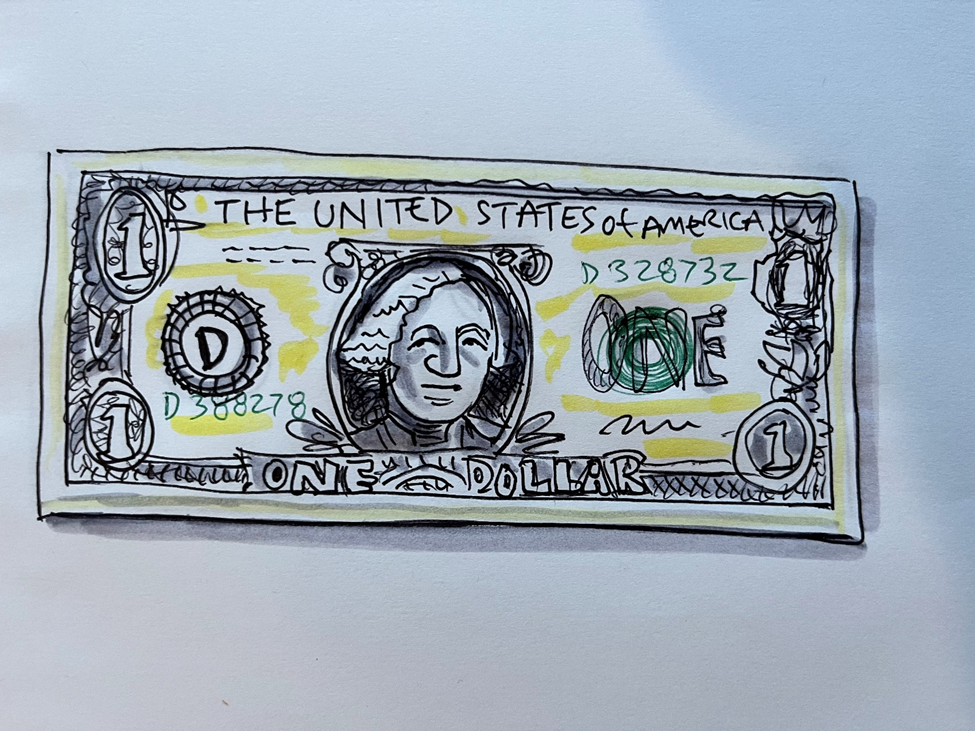“Without changing our
patterns of thought, we will not be able to solve the problems that we created
with our current patterns of thought.”
--Albert Einstein
Bias Part II
THE JASTROW ILLUSION
Compare these two stacked curves. Which is longer? This is a classic optical illusion, from the nineteenth century. In fact, the two are actually identical. The illusion vanishes with a change in perspective to upright/vertical. The human brain is automatically comparing everything it sees.
Ranking is a human proclivity, and it
is all around us. SEO (search engine
optimization) ratings, US News Best Colleges, The Olympics, pro sports and
amateur sports, Amazon product reviews, happiness rankings of countries
worldwide, employee job applications, political candidates’ approval ratings,
reputation polls. In fact, it is impossible for anyone to examine two objects
within the same category without ranking them in some way on some feature. These can include reputation, performance, brand,
cost, design, range of uses, aesthetics, color, size, speed, efficiency, and
dozens of other basic aspects. Think
about the time and energy we all expend in comparing ourselves to others. We compare along these lines and beyond –
without having any way of confirming these ratings except a general anxiety
about the need to do so. Our social media scores are a simple example.
Dominance
Top Ten lists are everywhere and cover
everything imaginable, including longest reigning monarchs, youngest state
leaders, no-hitter record pitchers, highest jumpers, most innovative countries,
winning tips for college-level essays, video game characters, famous
astronauts, hang-gliding champions, chess minds, Noble Peace Prize winners, teams
with the largest stadiums, quickest female Paralympians, and, of course, Best
Top Ten lists. The recent obituary of
singer Harry Belafonte ranks him as the first Black Emmy and Tony Award winner
as well as the first of any race to sell one million albums (“Calypso,” in
1956). (The Week, May 12 2023)
Our hourly ruminations consist of
searching for clues to our standing compared to others. Talent, wealth, perception, power, influence,
trustworthiness, and romantic interest are all rankings we seek to compete and excel
in. These are dominance hierarchies in
every society, and they serve a purpose.
As systems expert Peter Erdi puts it in his book Ranking, “Dominance
hierarchies are very efficient structures at very different levels of
evolution. They have a major role in
reducing conflict and maintaining social stability…to regulate access to these
resources [food and mates].”
Dominance ranking is a great mechanism
to maintain the status quo, so that people (and animals in general) have a good
idea of where they stand, and where they would like to stand in the future. Dominance goes beyond power, leadership, and
authority to include influence, expertise, competence (toward virtuosity), and
trustworthiness (a brand of social equity).
Think of writers, athletes, musicians, artists, and inventors and their role
as models of prestige.
Emergent properties
Ranking and valuing have their
value. But what are the emergent
properties, the unanticipated outcomes, of ranking competitions? There are costs. They begin with the constant need to measure
and judge, ending often enough in an ongoing critical evaluation of self as never good
enough. Constant comparison is the
essential activity of social media worldwide.
The Zoom screen affords the
opportunity-as-compulsion to see oneself alongside others. The self-criticism and appraisal of our
appearance up against others in the screen meeting is one reason that remote
meetings are as stressful as they are, regardless of the business at hand. And while we are comparing ourselves to others
on dozens of scales, they are doing the same.
No one entirely knows what their score is, but act as if they do. Billionaire investor Charlie Munger (Warren Buffet’s business partner)
declared “The world is not driven by greed.
It's driven by envy.”
The obsession with determining
the best of everything is a form of “virtue bias,” the directive we all share
to seek out a way that lets us agree on rankings for everything from colleges
to cars to cappuccinos. So we curate
“best of” lists for everything. Whatever
their standards, and whether those standards are based on tangible and provable
truths, these lists take on a life of their own, reinforcing themselves in a
self-fulfilling prophecy as the most-cited attract to become the most-desired and
best-selling.
The cost of
competition is then passed along to those underneath the top ranks—the second
place to mediocre to loser class. Which,
because so few of us are winners (on one scale, let alone several), means that we
all tarred by the bias against “second-best,” or as a colleague once phrased it,
“First Loser.” That’s not a great-sounding
placement, considering all the effort put out to make something of our lives
and our reputations. Just a reminder
that talent is not equally distributed.
Neither is the work ethic necessary to maximize that talent. This is why equality is such a tricky concept
to pin down and engineer. The social contest is not a
level playing field, and some of that levelling is under our own control, while
the start-points—family, location, culture, ethnicity, wealth, class—are more steeply
slanted as well as harder to equalize later in life.
These contests, in operation in
all domains of life, are one way to find information useful in making choices
and investments of our time, money, and attention. To this end, we seek out the best possible in
schools--including preschools--for our children, politicians who will represent
our interests, cars we can rely on to confer status as well as deliver performance, books that will reward the time investment in reading them. We seek out friends who will enhance our
efforts by reinforcing our values, making them worth the precious time invested
in socializing. We hope for college roommates whose
good character and work habits will encourage our own school success (as
important, some studies show, as the quality of the school attended). President-to-be Franklin Pierce had such a
roommate at Bowdoin College, one who fired up his ambition and work habits. Homes
in the most advantaged parts of town we can afford in order to enjoy quality
neighbors. Colleagues to match our
interests and our goals and lifestyles. Marriage partner, ditto. Such preferences are quality-control devices,
deployed as systematic bias protection against making poor judgments by our
social group.
Ratings are supposed to help us distinguish
between good and less effective use of our resources: time, wealth, energy,
reputation. Life is largely an
efficiency game, one we seek to win at as often as possible, by aiming to win each
time.
Outcomes and correctives
When recorded music became
available by record and radio, everything else started to sound amateurish, or homegrown,
or less-than-professional (John Phillip Souza, consummate composer in many
genres, predicted this effect of technology).
The music on the ground, as it migrated onstage, created its own
recording traditions that nationalized the genre (like folk, country, blues,
and jazz), leading to its own “best-of” listings. Belafonte’s signature “Banana Boat Song,”
“Day-O,” is a Jamaican work song out of the colonial island fields but massaged
by studio technologies, headed the charts in 1956. Songwriters led by “the father of American
music,” Stephen Foster, could be rewarded for their talents thanks to copyright
and printing advances.
In the workplace, to compensate
for the seller’s market in computer talent, companies are starting to adopt
“skills-based hiring” to get around degree-based ranking of job applicants. Applied
computer skill doesn’t require the traditional four-year degree or professional
title, and can be conducted on-line and on the associate level. Distinction between certification and
performance is the focus, opting for evidence-based performance over degree awards. By the same mentality, merit-based admissions
values achievement over race-based pro-bias in college admissions. Affirmative action continues to be an ongoing
debate that pits achievement against adjustment in the cause of balance and
fairness. To erase any competition for
recognition, Santa Monica High School in California has done away with its Honors
program in English as an enabler of inequality. Not without concern over loss of opportunity for bright contestants who are now losers of this resume benefit.
Even bat-flipping in
professional baseball, the practice of tossing
the bat in the air to celebrate a home run, is a
point of debate. The practice was labelled as disrespectful of the
opposing team and the game itself. More recently flipping the bat
is being viewed increasingly as simply a
celebratory exhilaration and not an insult – realigning expectations and
allowing for a more expressive game. Even the slightest ritual carries
with it a bias-based value.
All bias depends on expectations
and context as a culturally constructed virtue or vice. From the birth of human society, nonetheless, physical height is still positively correlated with leadership potential and dominance
in pecking orders. Erdi notes that “the
desire to achieve a higher social rank appears to be a universal, a driving
force for all human beings.”















